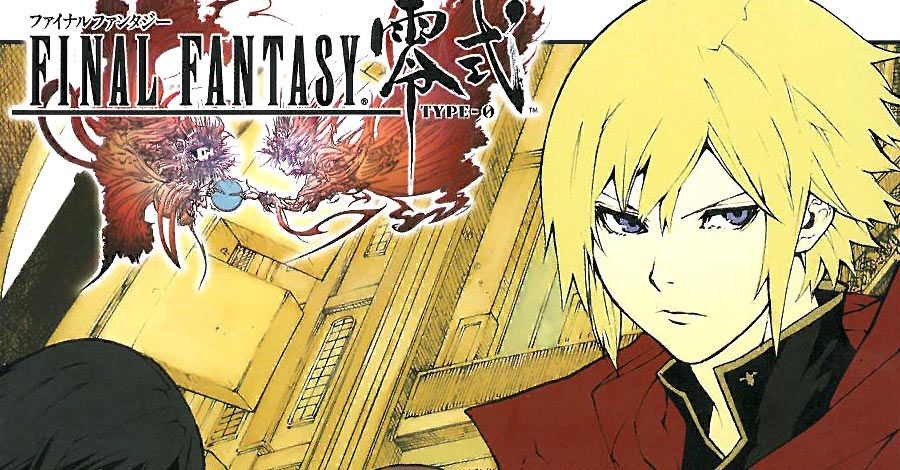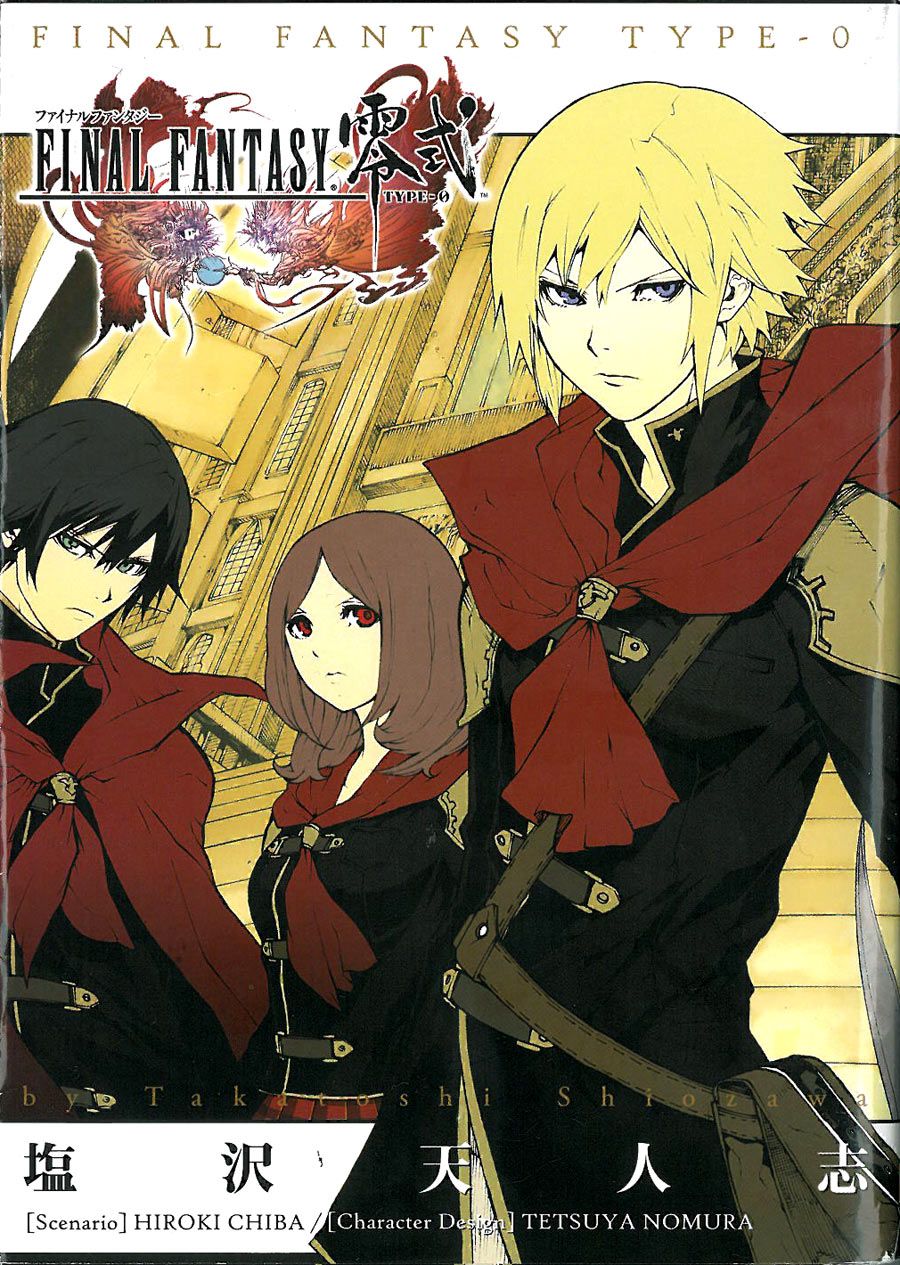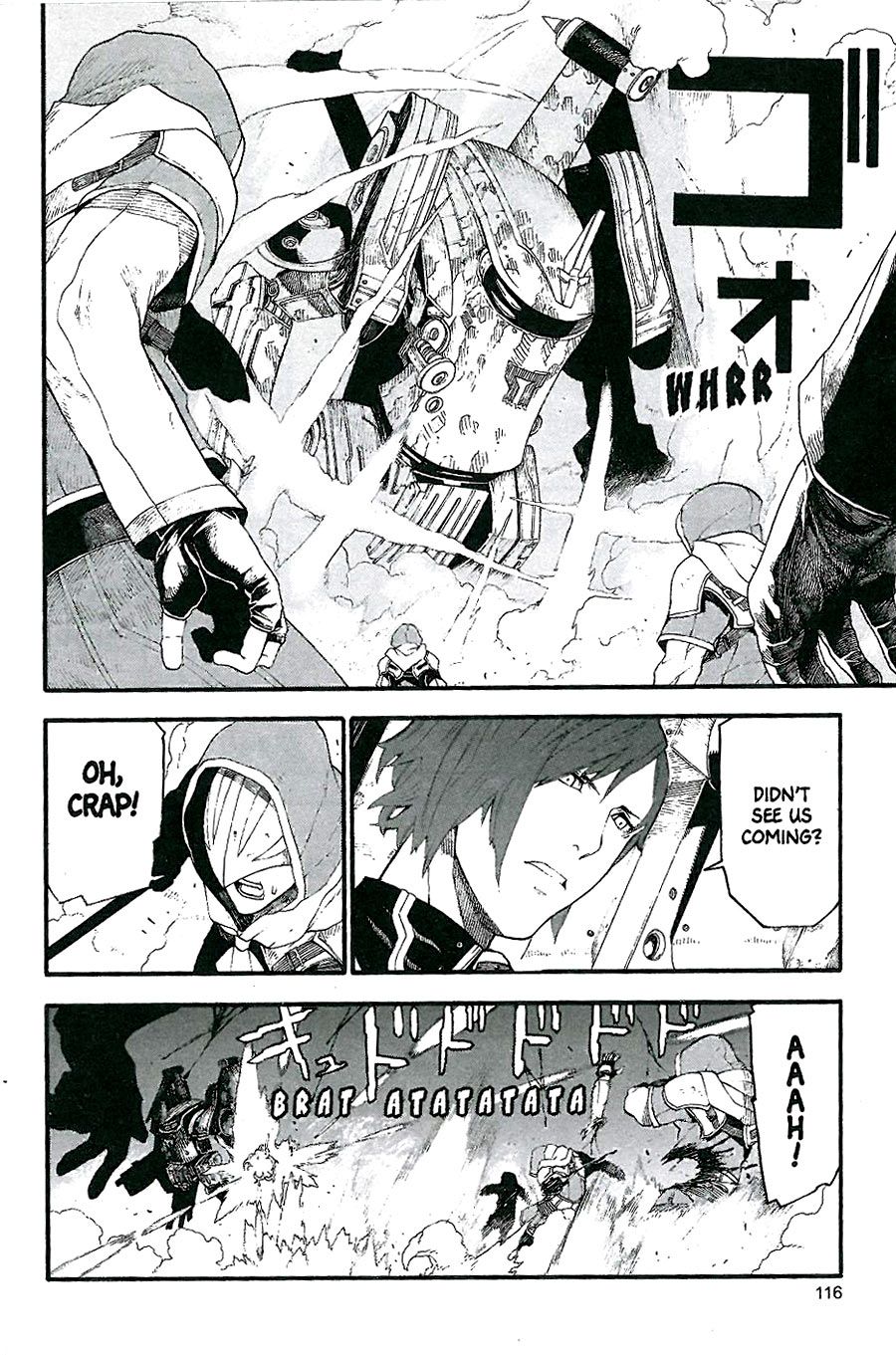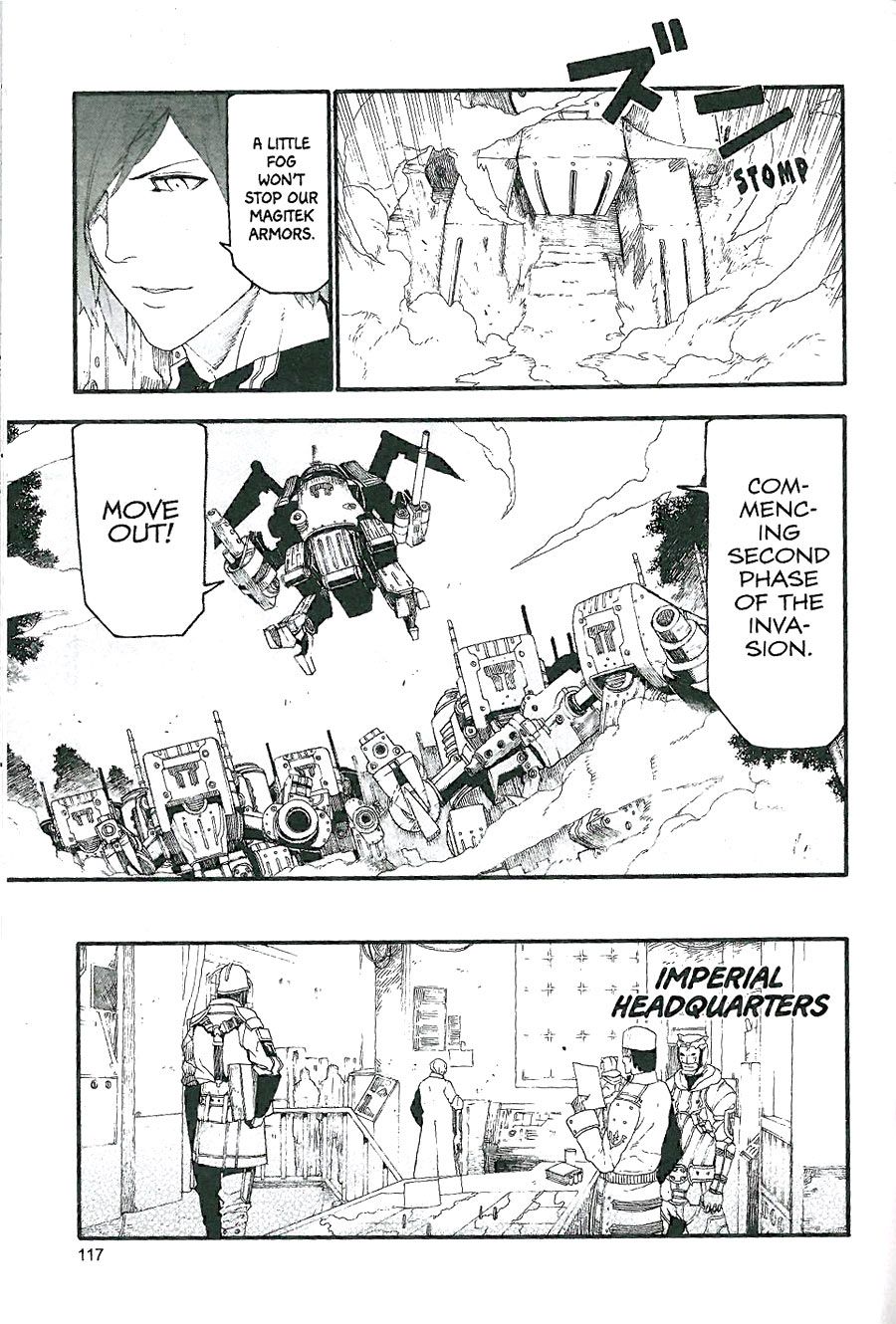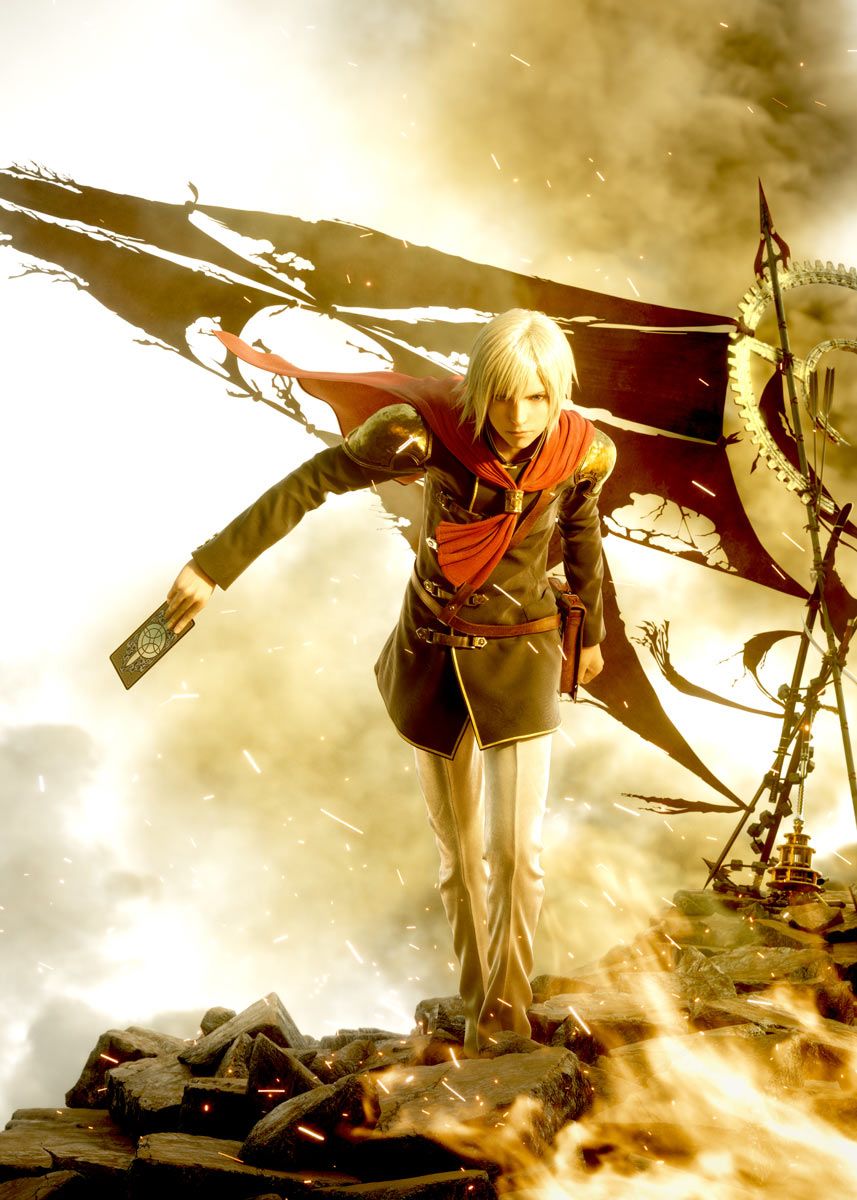Created by Hironobu Sakaguchi, the first "Final Fantasy" game was released in Japan in 1987. An early entry in the console RPG scene, "Final Fantasy" was foundational in establishing the genre's popularity in Japan, the United States, and internationally; as the old gamer joke goes, it was not the final fantasy. The series has sold more than 110 million copies to date, and next year will see the release of "Final Fantasy XV," a numeral that does not include the sequels, tie-ins and spinoff games the series has inspired. This week marks the release of one such spinoff title, "Final Fantasy Type-0 HD" for Xbox One and Playstation -- and, for a few dollars more, you can also own the first "Final Fantasy" comic to be published in English.
While numerous video game franchises, including "Metal Gear Solid," "Mega Man," "Mass Effect" and "Dragon Age," have enjoyed successful comic book expansions in recent years -- to say nothing of Archie's perennial favorite "Sonic the Hedgehog" -- Square-Enix's long-running role playing series has been notably absent. Each "Final Fantasy" game takes place in its own world, with its own unique lore, offering the potential for multiple series or miniseries exploring the past or future of Vana'diel, Cocoon, Midgar and other famous worlds. And the publisher has shown a willingness to expand upon its epics: "Final Fantasy IV" got "The After Years," "Final Fantasy VII" spun off into two additional games and a movie, "Final Fantasy X" was the first to have a direct sequel, "XI" and "XIV" are MMORPGs with all that that entails, and "Final Fantasy XIII" unfolded as a trilogy. Away from the console, "Final Fantasy" has spawned a number of interesting projects, including soundtracks and full orchestral performances, a few radio dramas, a couple cartoons and a CGI movie. But for such a story-rich franchise, it's odd how few books have been published in the "Final Fantasy" realms; there have been only a handful of novels and manga in Japan, and with the exception of a seven-episode webcomic introducing "FFXI," the 200-page manga volume included with "Final Fantasy Type-0 HD" Collector's Edition is the first "Final Fantasy" comic to appear in English.
It's an odd debut.
"Final Fantasy Type-0 HD" is a Playstation 4/Xbox One port of a game originally released in Japan on Sony's PSP handheld. An action RPG set in the world of Orience, it features many hallmarks of the FF franchise (Crystals, classes, epic storyline featuring a mix of medieval and futuristic tropes) while playing around with the formula. It looks pretty hot. Much has been made of the demo disc for "Final Fantasy XV," which will only be available with the earliest copies, and the footage that's been shown so far is stellar. And, as has become the custom with new releases in major franchises, there is a Collector's Edition of "Type-0" with all manner of goodies, in this case a steel case, an art book, a CD with selections from the soundtrack, a set of cards, and, of course, the manga. It looks like a beautiful package, and the game looks solid. But where is the fanfare for the first "Final Fantasy" comic to see print in the U.S.?
And what are we to make of the fact that this comic is only available as part of a $99 limited edition package?
There was almost another "Final Fantasy" miniseries, some twenty years ago. Earlier this year, "Astro City" writer Kurt Busiek spoke about a "Final Fantasy" comic he'd been hired to write in the 1990s which would have tied in to the then-upcoming "Final Fantasy II" for the Super Nintendo. (This game would eventually be rechristened "Final Fantasy IV," as it was in Japan, when Squaresoft realigned its numbering system and ported the game to other systems.) Busiek said the series, which was illustrated by Dell Barras with covers by Mike Mignola, was fully scripted, with two issues drawn, but fell apart when publisher Hollywood Comics folded. There were, however, house ads promoting the project, and Busiek shared some art from the series.
"I don't know that I did a particularly good job of making it like the game," Busiek said on Twitter. "It was a decent story, but whether it matched up to what fans would expect (esp. today), I can't say." In the comments of a Robot 6 article covering this bit of buried treasure, Busiek described himself in 1991 as "a workmanlike-but-not-terribly-noted writer," and elaborated that "heresy upon heresies, I changed things (with Squaresoft's permission)," including the main characters' names.
While it's been more than twenty years since "Final Fantasy IV's" debut, it remains one of the best-loved games in the series and appears regularly on lists of the best video games of all time. And Squaresoft (now Square-Enix) has done a phenomenal job perpetuating the game's availability and popularity, porting it first to the Playstation, then the PSP/Playstation Network and Game Boy Advance (with new dungeons!), then completely working the game with 3D graphics and sending it to the Nintendo DS, iOS, Android, Steam, and probably any other platform one might care to imagine. In Japan, the "After Years" sequel was released for mobile devices one episode at a time, and these scenarios, too, were eventually brought Westward.
To summarize: it's not too late for a "Final Fantasy IV" comic. Or "Final Fantasy VI." Or "VII."
It's not too late to localize the manhwa "Final Fantasy XI: Out of Orders." Or the several manga based on "Final Fantasy Crystal Chronicles." Or "Final Fantasy XII." They may be based on entries in the series that, while solid in their own right, are less often mentioned in lists of the best video games of all time, but the content exists, and there is an audience for it.
More importantly, there's room for even more. What we've seen of "Final Fantasy XV" has fans thrilled; a comic tie-in could help maintain that momentum.
Representatives from Square-Enix declined to be interviewed for this article, but they did provide a copy of the "Final Fantasy Type-0" manga for review. Illustrated by Takatoshi Shiozawa from a story by Hiroki Chiba, the book serves as an introduction to the world of the game, one which features an unexpected mix of elements from several other games in the series. Moogles are present, of course, and chocobos will factor into the mix, as well; but there are also mentions of the L'Cie (from the "FFXIII" trilogy), Magitek ("FFVI"), and more. Of course, these should not to be taken to imply continuity with other games, merely a reminder that yes, this is a "Final Fantasy" world, and there are potentially infinite iterations of a familiar term.
There are nations at war. There are crystals at the center of the conflict. And an elite band of heroes, the "Class Zero" cadets enigmatically named after the cards in a standard deck, who wield their unique powers against an unstoppable army.
What's most interesting about the story, though, is the idea of "the Crystal's Blessing." When someone dies in the world of "Type-0," he or she is completely forgotten. Characters express various views on this -- some believe forgetting the past is a necessary means to press forward, while others swear oaths to "fight for everyone's history," but no one is unaffected. The implications are driven home in the second story, when two young children, Rem and Machina, hide from soldiers charged with killing everyone in their village to prevent the spread of a Mutant Malboro plague. Machina's mother secures them as best she can before confronting the soldiers. "Machina, your mom is --" Rem says, before their protector is executed. Then, "Who were we talking about?"
It's a good story. It succeeds in driving excitement for the game, bolstering the desire to explore this world to the fullest. It should make "Final Fantasy" fans very happy.
But the best part is in the inside front flap.
In a convention that will be familiar to manga fans, several folks involved with the project introduce themselves and thank the reader in short blurbs on chapter break pages throughout the book. Inside the cover, after the customary greetings, artist Takatoshi Shiozawa said, "In Japan, we have also published a manga entitled 'Final Fantasy Type-0 Gaiden: Hyouken no Shinigami (The Ice Reaper)' that draws on the story of Kurasame as a young man. I sincerely hope that you get to read it some day soon!"
The best part is that Shiozawa-san's wish is granted, with the announcement earlier this month that Yen Press will publish the first volume of "Fantasy Type-0 Side Story: The Reaper of the Icy Blade" in July.
Does this mark the beginning of "Final Fantasy" comics in English, or at least the localization of "FF" manga moving forward? If so, it's fantastic development, one that should be very welcome to comics readers who enjoy the rich stories of "Final Fantasy" games.
Is it too much to hope that we might also see Western-style comics for "Final Fantasy" games past, present and future? Time will tell.

